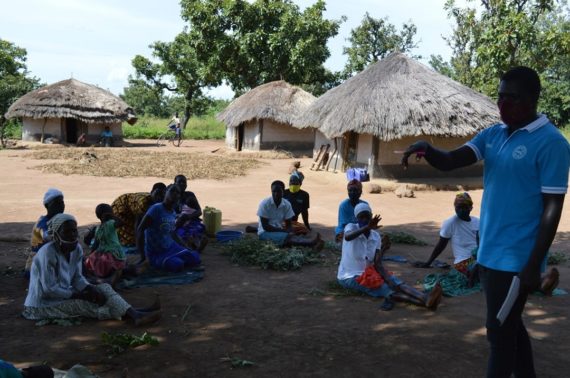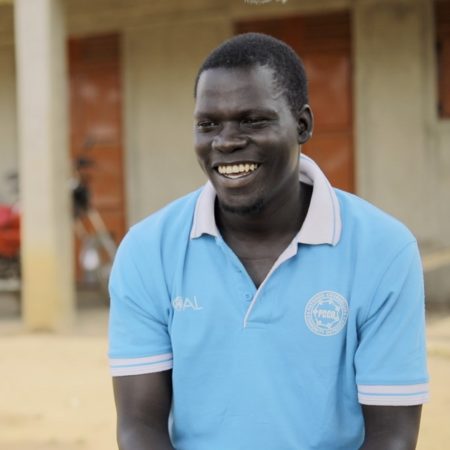 Stories
Stories
January 13, 2022 • 2 min read
Maxwell Odongo, 25, walks through a thicket of overgrown bushes along a narrow path leading to a cluster of grass-thatched homesteads. Along the way, he points to some bean and maize gardens that have just been freshly weeded.
He is one of the Nutrition Impact Positive Practice (NIPP) volunteers based in Babamunbor village, Agago District, over 450 km north of Uganda’s capital city Kampala. He has come to engage in a circle session with community members, to discuss the best ways to fight malnutrition. It is a routine he does twice each week.
Maxwell is one of 30 volunteers trained to work with his community on ways to prevent malnutrition at household level. Maxwell underwent training as part of GOAL’s Nutrition Sensitive Agriculture (NSA) project, funded by Irish Aid.
Positive Nutrition Behaviour
The project, jointly implemented with Patongo Community Counselling Outreach (PCCO), uses the NIPP approach to guide community members towards adopting positive nutrition behaviors. These can include; ensuring families are eating a balanced diet, maintaining hygiene and sanitation standards, practicing appropriate early childcare, and using fuel-efficient stoves.
Maxwell has been a nutrition volunteer since the beginning of 2021. He volunteered for the project after realising that children in his community were dying from malnutrition – a preventable disease.
“Before we started on these circle sessions, many children presented with severe symptoms of malnutrition around this area. I was trained with support from GOAL and volunteered to share this knowledge, especially to mothers with children below five years old”.

Circle Sessions being delivered to community members in Babamunbor village.
Finding Local Solutions
Aside from the need to improve household nutrition behaviour, another factor leading to high rates of malnutrition in the area is the distance to the nearest hospital. Before Maxwell started working with the local community, children needed to travel over 70 kilometres to be assessed for malnourishment and get the treatment they needed. Limited access to the hospital meant that many were not identified for treatment and continued to suffer.
“We also hold workshops on how to identify, organise and train local Village Health Teams (VHTs).” Maxwell says.
“These teams are trained to identify severe acute malnutrition (SAM) and moderate acute malnutrition (MAM) in children under five. Children in need can then be referred to the nearest health facility for treatment.”
To bring assessments to the household level, Maxwell also teaches families how to use a mid-upper-arm-circumference (MUAC) tape. The tape is a simple method for parents to measure their children’s growth and monitor their progress at home.
Maxwell beams with pride and joy when he discusses how communities are transforming with his help. His work is improving local nutrition behaviour, enabling families to monitor their child’s health and saving lives.

